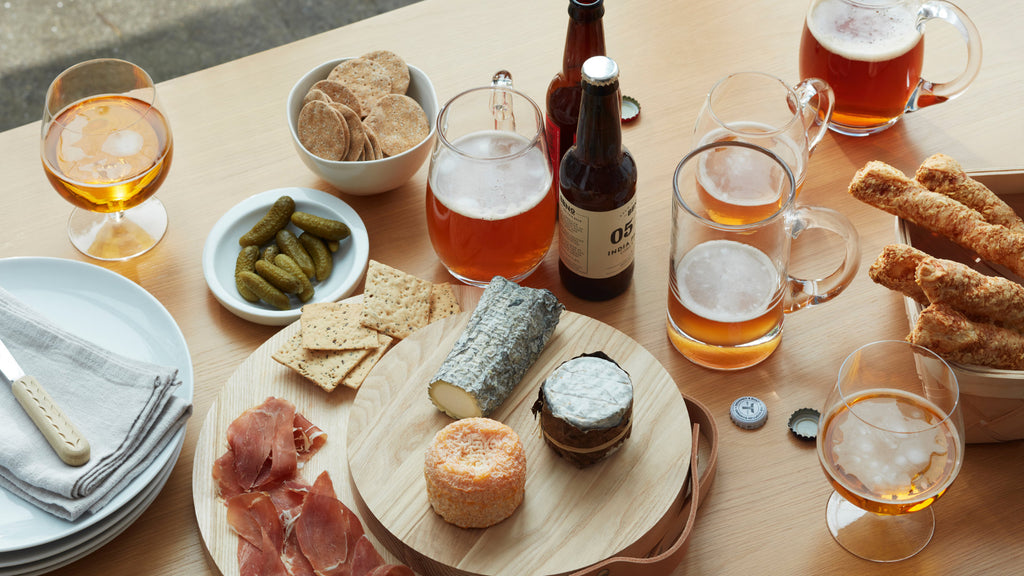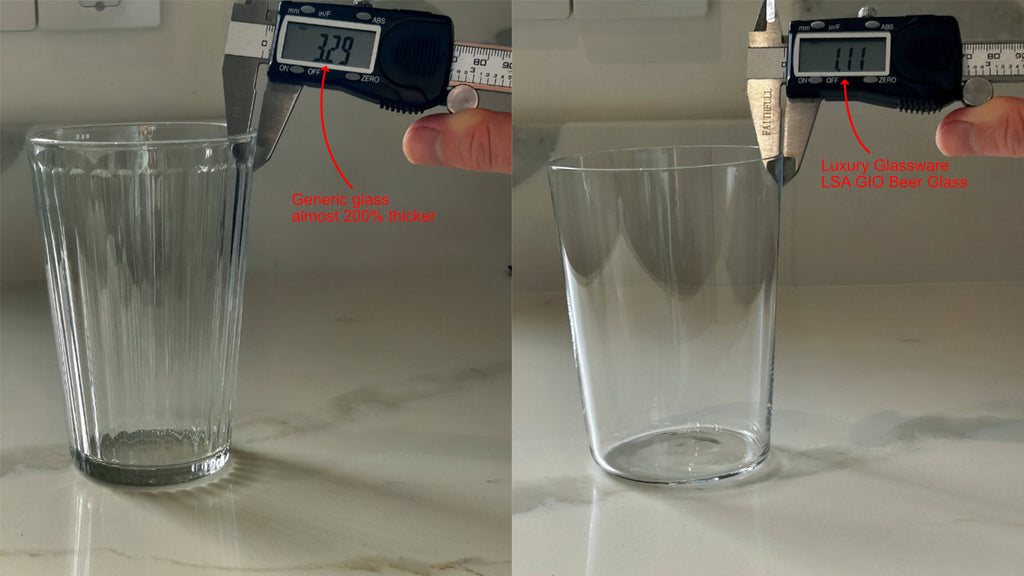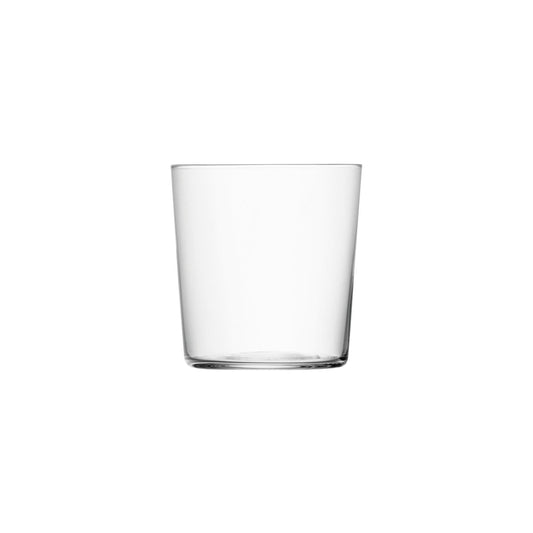Table of Contents
The 6 Characteristics That Define Luxury Glassware
Understanding the key characteristics of glassware is crucial for making informed purchasing decisions. While a high price tag doesn't automatically guarantee quality, identifying the core principles that define premium glassware can help you make smart choices. For example, even if a piece is made from crystal, crude manufacturing and poor design can significantly lower its value compared to well-crafted glassware of alternative materials. In essence, true premium glassware goes beyond simply being expensive; it embodies superior craftsmanship, design, and functionality.
1. Glassware Material
Glass can be manipulated by added or subtracting substrates for different characteristics. The three main types of glassware from most expensive to least are crystal, borosilicate glass, and soda-lime glass. Crystal is revered for its clarity and brilliance. Borosilicate glass for its durability and heat resistance and soda-lime for its affordability.
The caveat to all of this is soda-lime glassware can and often does look better than crystal. The designer and manufacturer play a key role in the final result and can elevate a humble material into something special with their talents. So if your in the market for glassware and want something for special occasions don't automatically dismiss based on material.
* Typical material content breakdown *
| Material | Primary Elements | Additional Elements | Properties |
| Crystal Glass (Lead Crystal) | * Silica (70-80%) * Lead Oxide (15-30%) | Potassium oxide, Barium oxide | High brilliance, clarity, and refractive index. Rings with a distinctive sound. Sensitive to scratches and etching. Note: Lead crystal with over 24% lead oxide is not food-safe due to lead leaching. |
| Borosilicate Glass (Pyrex) | * Silica (70-80%) * Lead Oxide (15-30%) | Sodium Oxide, Aluminium Oxide, Potassium Oxide | Excellent heat resistance, chemical durability, and scratch resistance. Lower clarity than lead crystal. |
| Soda-Lime Glass | * Silica (60-75%) * Sodium Oxide (10-20%) * Calcium Oxide (5-15%) | Magnesium Oxide, Aluminium Oxide | Most common, affordable, and widely available. Moderate clarity and durability. |
2. Glass Form
Really one of the most essential considerations. The form will effect many aspects of your drinkware. The aesthetics, its proportions and shape affect balance and comfortability in the hand the colour and aromas.
We advocate for a simple and refined forms that are naturally pleasing to the eye. This way your luxury glassware will stand the test of time.

3. Glassware Craftsmanship
Handmade glass is felt and seen by the idiosyncrasies in the production process. By hand-blowing the glassware a more refined and premium feel and aestectic is achieved in the hands of master craftmans, so look for mouth-blown glass when opting for artisan glassware and avoid commercial manufacturing processes.
4. Glassware Wall Thickness
Ultra-thin glass walls, achieved through advanced techniques, enhance the tactile experience and amplify the subtle flavours and aromas of your beverage. They showcase the drink's clarity like no other. Thin glassware is absolutely a sign of quality and offers a better sensory experience visually and in the hand. Thick glassware offers durability as a net positive but often lacks the intangibles that define a premium product.

5. Glassware Weight
The featherweight feel of thin walls contributes to a luxurious and refined perception. They are comfortable to hold and enhance the elegance of the drinking experience. Glass weight and wall thickness are somewhat intertwined with one effecting the other with thicker walls and bases contributing to glass feeling heavier, which can be seen as more substantial but less sophisticated.
6. Sound of Glass
The sound of glass is influenced by factors like shape and size. A gentle "ping" when tapped often indicates high quality, primarily due to the glass's thickness and material. Crystal produces the highest pitch, followed by borosilicate and then soda-lime glass. Higher frequencies generally sound more pleasing to the ear. In contrast, duller and less resonant sounds tend to come from thicker walls and less optimal material compositions.
Keep in mind, these are general distinctions. Exceptions exist, and some everyday glassware may excel in specific features. Nonetheless, this should provide a solid foundation for understanding the key characteristics that set luxury glassware apart from its everyday counterparts




